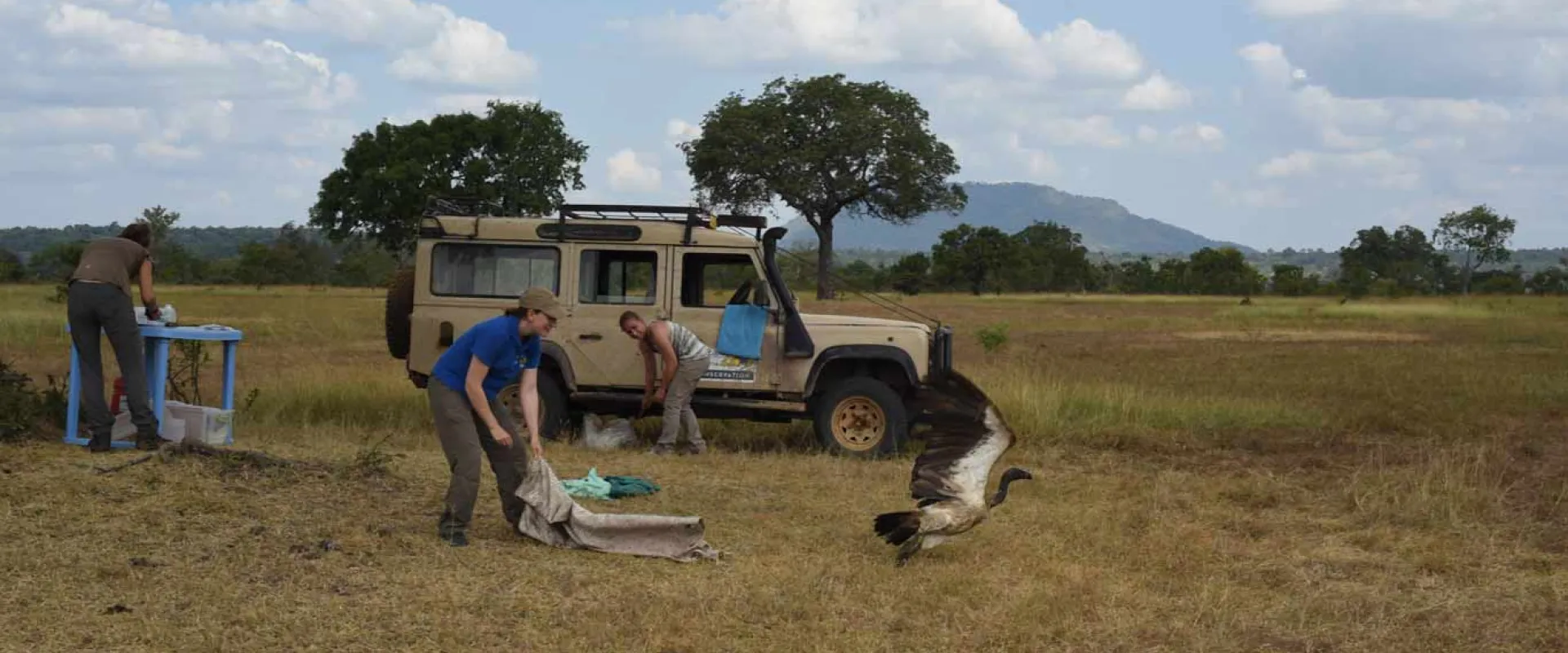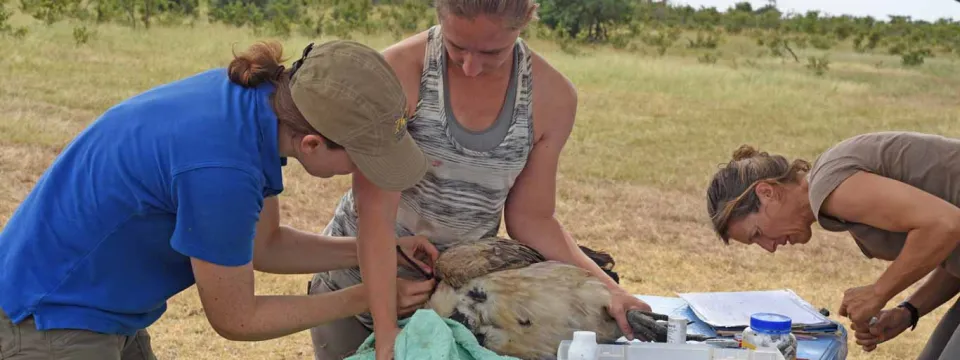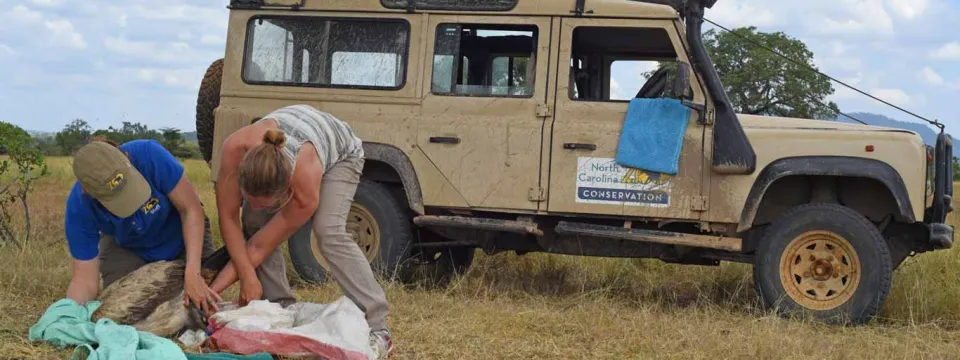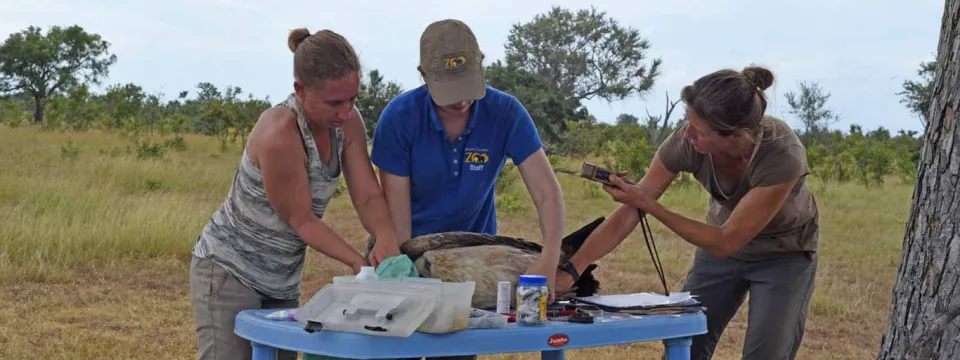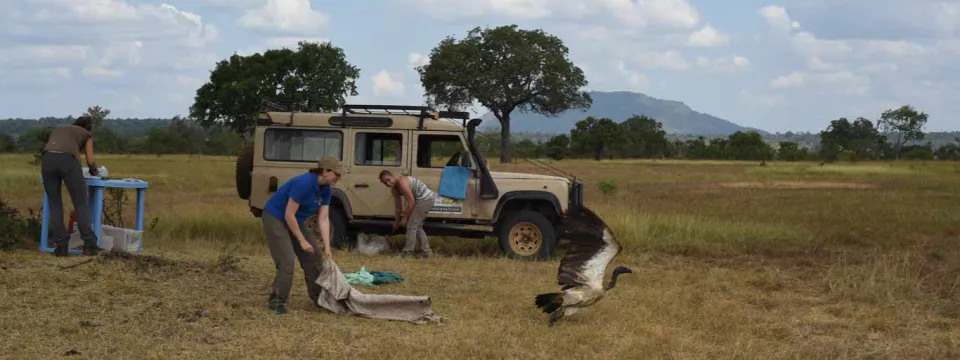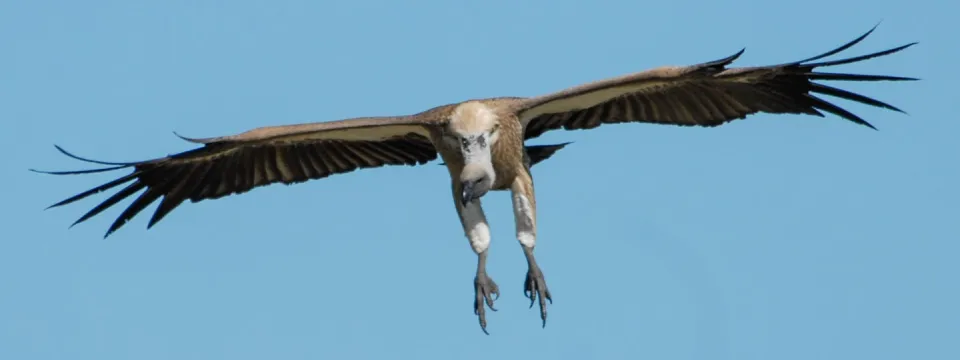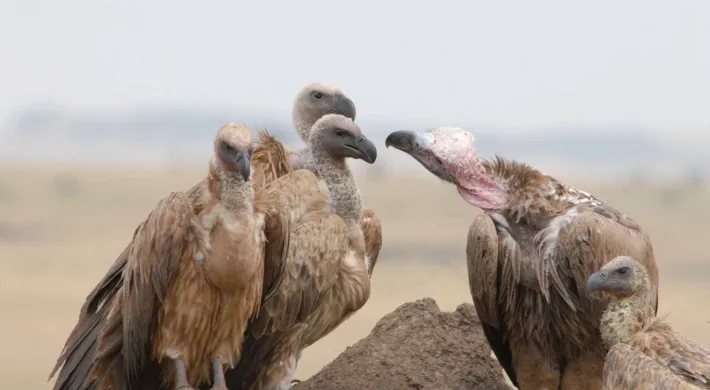Dr. Corinne Kendall, Curator of Conservation and Research for the North Carolina Zoo
My packing list for trips to Tanzania might seem a bit unusual to some. I’m sure to bring clothes and my passport, but each trip is also an opportunity to bring out some supplies you might not normally find in Tanzania – unscented dental floss, aquarium tubing, Teflon tape (imagine a long thick but very strong rope), 250 lb. strength fishing line, parachute cord, and most importantly a 70 gram (this is about half the weight of your cell phone) solar-powered satellite telemetry. All the essentials for trapping and tagging one of the world’s fastest declining but most important birds – the African White-backed Vulture.
Vultures are strong – so our materials need to be as well. Parachute cord and fishing line are strung together to make nooses – large black loops – that will be laid along a carcass or dead animal to catch the feet of the vultures. Teflon tape is strong and durable and with an aquarium air hose inside can also be flexible and a bit stretchy. I have used this to fashion a vulture backpack if you will, that will be used to fasten our satellite tag to the bird. The straps go around the shoulders and under the legs, so the unit sits securely (and with great sun exposure) on the bird. Dental floss – another strong and waterproof material – is my ideal thread for the job and will help when tying the final strap onto the bird.
Below: Dr. Kendall helps tag a vulture in Tanzania.
Vulture trapping requires patience, persistence, and luck. Despite not having any real predators and being extremely inquisitive, vultures can be surprisingly cautious. After setting up our nooses on a fresh carcass, my team and I sit and wait about 50 meters away. For the next several hours our job is to observe what comes to the carcass and when something does arrive, we wait and watch carefully, hoping it will be trapped. At first, we are mostly watching the air. Birds will fly over and carefully examine the situation from the sky before choosing to land. A vulture or scavenging eagle must determine if there are any predators still lurking and protecting their prey before risking their lives by coming to the ground. A beautiful black eagle called a Bateleur flies over. With a deep white band along the edge of their wings and red feet and beaks, these birds are easily identified. I can see the eagle angle its head to examine what lies below it. It leans from side to side as it soars giving it a rather acrobatic look in flight (hence the name which means acrobat in French). After careful assessment, the Bateleur flies on.
Initially, one might find this disappointing, but I know the drill. This eagle is clearly interested in our carcass, but it must disguise its interest to prevent other birds from following it in. You see, vultures spend much of their time watching each other and looking for Bateleurs or other birds descending on a carcass. Because the Bateleur is considerably smaller than a vulture, its opportunities to feed will be maximized if it can land without anyone seeing. So, while it passes by the carcass the first time, it will come back when it feels more confident that it is not being watched.
Sure enough, 20 minutes later, the Bateleur is on the ground and feeding. Unfortunately for the eagle, but very fortunately for us, its sneaky behavior didn’t work this time. Vultures have seen it land and are now pouring in. When vultures descend on a carcass, it can be quite a frenzy. You literally hear the rushing sound like that of a jet plane, as birds dive bomb their way into the carcass. After hours of waiting, thirty vultures have arrived in under three minutes. The chaos of vulture feeding is perhaps the most exciting aspect of the endeavor. Vultures squawk and hiss and bite each other as they vie for the best spot on the carcass, reaching their long necks, powerful beaks, and even serrated tongues into the carcass so they can slurp meat and soft tissue from the dead animal.
In all the hubbub, none of the vultures can even see the nooses and soon a bird has its foot caught. My heart races and breathing shortens as we drive up. At the sight of our car, the other birds flee, but one vulture remains. After attempting to fly off, the vulture finds itself lying on the ground with its wings spread out. We throw a towel over it and then the real frenzy begins. In under fifteen minutes and with no need for anesthesia (which can be risky), we have taken blood, weighed the bird (a whopping 12.5 lbs!), and attached the satellite tag. And the bird is off – flying into the great blue yonder, but now communicating with us on a daily basis about its location.
Zoo staff have tagged over 45 vultures over the last six years in southern Tanzania and thanks to the solar-powered units, which can last several years, we are still following 20 birds every day. The information they provide is priceless and critical for protecting them – to learn why you can check out my last blog and a fun video about our work.
Link to Untamed Science video about vultures
Below: Dr. Kendall releasing a tagged vulture in Tanzania
